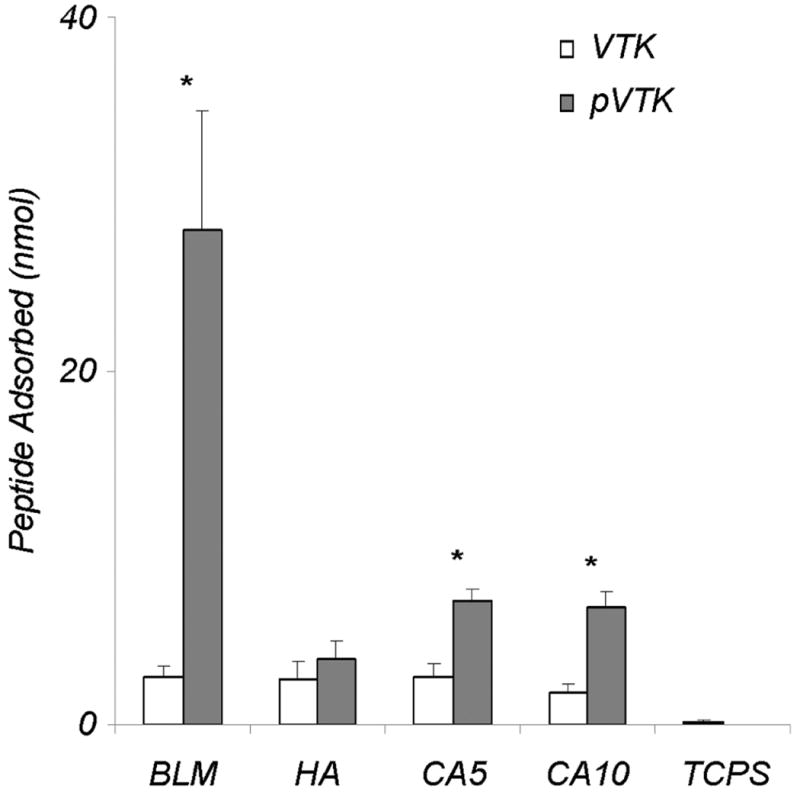Fig. 1.

Adsorption of VTK and phosphorylated VTK (pVTK) peptides on bone-like mineral (BLM) layer, and pressed and sintered disks prepared from hydroxyapatite (HA), 5.6% carbonated apatite (CA5), and 10.5% carbonated apatite (CA10), and tissue culture polystyrene (TCPS). Phosphorylating serine residues in the VTK peptide increased peptide adsorption onto BLM 10-fold in comparison to nonphosphorylated VTK. While less, a significant increase in pVTK binding was also observed for the CA5 and CA10 substrates. Data are presented as means ± S.D. * denotes statistical differences between adsorption of VTK vs. pVTK on a given substrate (p < 0.05).
